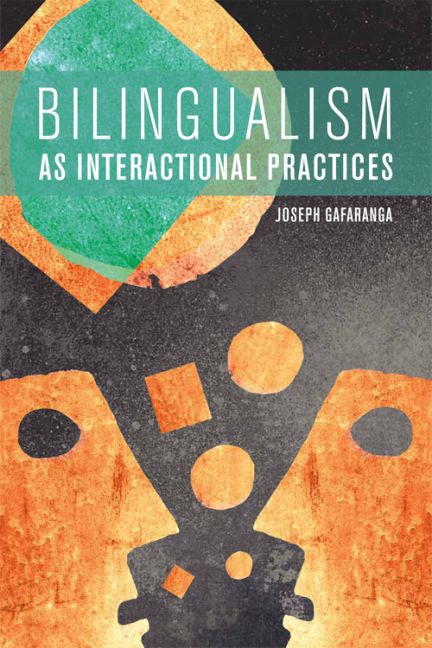Book contents
- Frontmatter
- Contents
- List of illustrations
- Acknowledgements
- Transcription conventions
- 1 Introduction
- 2 The rehabilitation of code-switching
- 3 An inductive perspective on bilingualism as interactional practices
- 4 Language choice and speech representation in bilingual interaction
- 5 Language choice and conversational repair in bilingual interaction
- 6 Language choice and appositive structures in written texts in Rwanda
- 7 Summary and conclusion
- References
- Index
5 - Language choice and conversational repair in bilingual interaction
Published online by Cambridge University Press: 26 April 2017
- Frontmatter
- Contents
- List of illustrations
- Acknowledgements
- Transcription conventions
- 1 Introduction
- 2 The rehabilitation of code-switching
- 3 An inductive perspective on bilingualism as interactional practices
- 4 Language choice and speech representation in bilingual interaction
- 5 Language choice and conversational repair in bilingual interaction
- 6 Language choice and appositive structures in written texts in Rwanda
- 7 Summary and conclusion
- References
- Index
Summary
Introduction
In addition to speech representation, conversational repair is one of the interactional sites in which CS has frequently been reported to occur (e.g. Gumperz, 1982; Auer, 1984; Wei, 1994; Alfonzetti, 1998; Shin and Milroy, 2000; Gafaranga, 2000; Ihemere, 2007, etc.). Yet, despite these frequent ‘noticings’, just as in the case of DSR, no systematic account of repair in bilingual conversation has yet been proposed. To be sure, working under a very strong influence of what, in the last chapter, I have referred to as the contextualisation assumption, researchers have commented on CS in repair sequences as mainly, if not only, serving a signalling function through language contrast (Auer, 1988 / 2000: 176). In this respect, Alfonzetti writes:
Code-switching (…) can work as a self-repair technique, as an alternative or together with other techniques normally used in monolingual discourse, like self-interruption, vowel lengthening, hesitation pauses, repetition etc. (Alfonzetti, 1998: 186–7)
That is, according to this view, CS functions as a repair marker. Evidence in support of this view can be found in cases such as Extract 5.1 below, where the choice of English in the repair initiator in turn 2 highlights this function through contrast with the choice of Chinese in the reparandum (Milroy and Wei, 1995: 151).
Extract 5.1 (Milroy and Wei, 1995)
1. A: … koei hai yisaang.
[He's a doctor.]
2. B: Is he?
3. A: Yichin (.) hai Hong Kong.
[Before] [In Hong Kong]
However, the same cannot be said of English–French CS in the following instance of conversational repair. Here, what matters is not so much that the choice of French contrasts with that of English, but rather that language choice itself, the choice of English in this case, is the problem to be repaired.
Also consider Extract 5.3 below. In the example, it is not the case that the switch from Kinyarwanda to French in turn 2 merely signals repair for, if it were, there would be no need for first speaker to adopt the same French item in turn 3.
- Type
- Chapter
- Information
- Bilingualism as Interactional Practices , pp. 95 - 116Publisher: Edinburgh University PressPrint publication year: 2017



